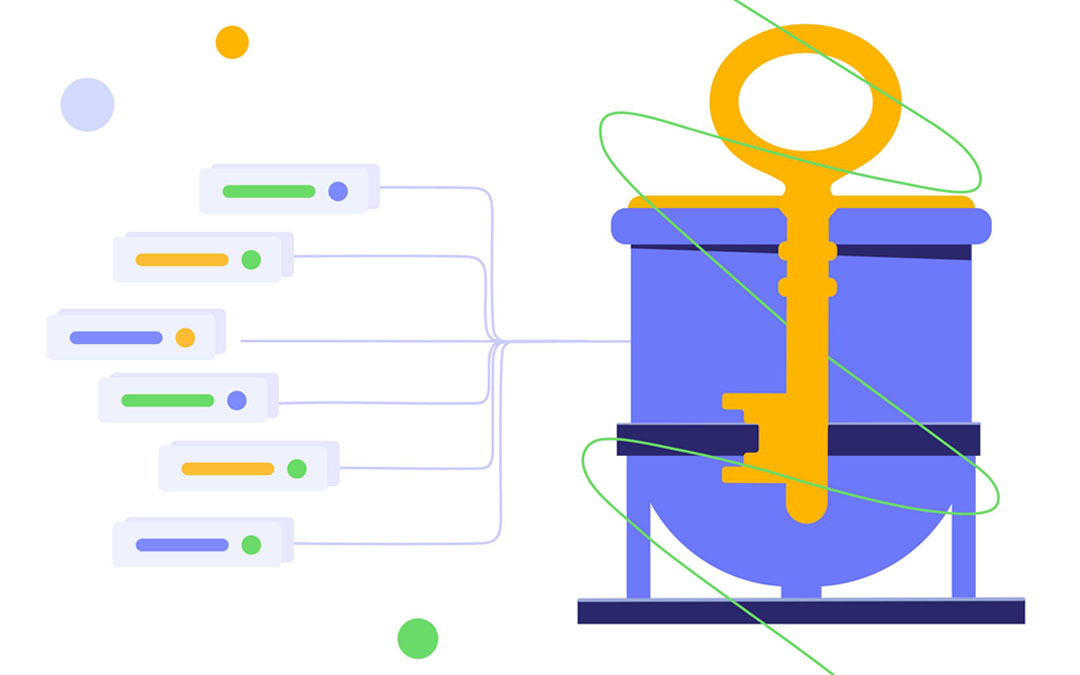What are the key components of high-performing manufacturing? First, it’s the adoption of the latest technologies (Industry 4.0) and implementation of advanced software solutions. They help manufacturers streamline their processes and increase their efficiency. The other essential component that facilitates process optimization, reduces costs, and increases manufacturing companies’ competitiveness is manufacturing operations management (MOM).
Read the article to explore the essence and benefits of MOM as well as discover recommendations that will help you manage manufacturing operations most effectively.
What Is Manufacturing Operations Management?
Managing manufacturing operations involves their supervision and optimization at multiple levels. Its main purpose is to produce better products more efficiently and at lower costs. To achieve this goal, MOM involves the analysis of each stage in the production process to make sure that they are maximum efficient, and their costs are minimized.
As a result, manufacturers can reduce waste and inefficiencies, optimize production costs, and create better products that meet customers’ needs.
Key Elements of Manufacturing Operations Management
Production management.
This encompasses capacity planning, production scheduling, and workflow management. Production management helps make sure that a manufacturing company creates the required products of high quality, in the required quantities, and at the right time.
Quality management.
The main goal of quality management is to ensure that the manufactured products comply with the right quality standards and specifications. This component includes quality control, quality assurance, and continuous improvement processes.
Inventory management.
This practice involves tracking and managing raw materials, work-in-progress, and finished products. The purpose of inventory management is to make sure that the right material resources are available when needed, minimize storage costs, and reduce the risk of stockouts.
Supply chain management.
Supply chain management aims to regulate the flow of materials, information, and finances across the entire supply chain. This practice increases supply chain efficiency, makes it cost-effective and responsive to market changes.
Maintenance management.
With this component, manufacturers ensure that production equipment and machinery are in good working condition. It involves preventive, predictive, and corrective maintenance that helps manufacturing companies reduce downtime and extend the life of equipment.
Process control.
Process control involves the use of sensors, automation, and various control systems to monitor and control manufacturing processes and ensure they operate within specified parameters and maintain consistent product quality and production efficiency.
Reporting and performance analysis.
This element of MOM involves gathering and analyzing data on key performance indicators, e.g., production output, quality metrics, and equipment efficiency. These insights are used to spot inefficiencies, areas for improvement, and make informed decisions.
The Role of Operations Management in Manufacturing Industry

Implementing operations management in manufacturing provides benefits that can significantly improve a manufacturing company’s overall performance and competitiveness. Here’s how MOM can transform manufacturing processes.
Improving Product Quality
MOM optimizes efficiency and improves material storage, which reduces the risk of damage to the final product. This leads to fewer defects, lower losses, and higher profits. With fewer defects, you can deliver better-quality products to the market, while the increased efficiency provides more time for research and development to meet changing customer demands.
Reducing Waste
Manufacturing operations management plays a crucial role in minimizing waste in the production process. It optimizes the use of raw materials, streamlines production workflows, and improves quality control so that manufacturers reduce the amount of scrap and rework. This leads to saving costs and contributes to more sustainable production, which is one of the latest manufacturing trends.
Better Regulatory Compliance
Regulatory compliance is one of the critical aspects of modern manufacturing. MOM helps ensure that your production processes comply with industry standards — this becomes possible thanks to real-time monitoring, accurate documentation, and traceability. Non-compliance can lead to fines and damage to a company’s reputation. So, MOM will allow your company to maintain high standards as well as meet legal requirements and customer expectations.
Enhancing Resource Management
Effective resource management is the key to maximizing production efficiency and optimizing costs. Manufacturing operations management provides detailed insights into resource utilization, including labor, materials, and machinery. Optimization of resource allocation and utilization allows manufacturers to reduce downtime, improve productivity, and ensure that resources are utilized to their full potential. In turn, this minimizes operational costs and enhances overall efficiency.
Ensuring Competitive Advantage
MOM makes it possible to improve manufacturing operations continuously, which leads to better product quality, faster time to market, and increased customer satisfaction. In addition, leveraging advanced analytics and data-driven insights allows manufacturers to make informed decisions regarding product improvements, which gives them a competitive edge over other manufacturing organizations.
Increasing Profitability
All the above-mentioned benefits (reducing waste, ensuring compliance, gaining a competitive advantage, and more effective resource management) help manufacturers lower production costs. What is more, improved product quality contributes to customer satisfaction, which in turn leads to higher sales and boosts profitability.
Now that the benefits of manufacturing operations management are clear, let’s discover some best practices that will help you make MOM maximum effectitve.
Best Practices for Manufacturing Operations Management

To take advantage of all the benefits of manufacturing operations management, you need to know and implement the best practices listed below.
1. Leverage Data to Make Decisions.
Data-driven decision-making is at the heart of effective operations, and MOM isn’t an exception. Collecting and analyzing real-time data from production lines will allow you to identify trends, pinpoint inefficiencies, and make informed decisions. In addition, utilizing data analytics for manufacturing operations management will help manufacturers predict potential issues and take timely measures to prevent them.
2. Utilize Advanced Technologies and Automation.
Incorporating technological advancements (e.g., Internet of Things, Artificial Intelligence, sensors, etc.) into manufacturing operations can significantly improve their efficiency and accuracy. These technologies enable more effective monitoring of the production processes, predictive maintenance, more effective decision-making, and overall manufacturing process optimization.
Automation is the key to increasing productivity and reducing human error in manufacturing. Automating repetitive tasks and processes lets your employees focus on higher-value activities, which also speeds up production times. In turn, implementing robotics, automated machinery, and smart production lines significantly increases manufacturing efficiency and product quality.
Read more: Digital Transformation in Manufacturing in 2024: Benefits & Examples
3. Promote a Safety Culture.
A strong safety culture is essential for protecting employees and maintaining uninterrupted production. Here are some more reasons to prioritize safety for seamless manufacturing operations.
- It protects employees from threats and promotes their well-being.
Safety culture reduces the likelihood of accidents, injuries, and illnesses so that employees can work in a safe environment and be productive.
- It ensures operational continuity.
Accidents in the manufacturing environment can cause significant disruptions to manufacturing operations, which will result in downtime, reduced productivity, and delays. Manufacturers can minimize these disruptions and ensure operational continuity by keeping a strong focus on safety.
- It helps reduce costs.
Workplace accidents can result in additional expenditures because of medical expenses, legal fees, workers’ compensation claims, fines from regulatory bodies, etc. In turn, safety measures will allow manufacturers to reduce these financial risks and optimize costs.
Finally, manufacturing organizations are subject to safety regulations set by government agencies or industry bodies. So the focus on safety is a must for production companies that strive to succeed in managing their operations.
4. Implement Wise Risk Management.
Similarly to ensuring safety in the manufacturing environment, effective risk management is crucial for successful manufacturing operations management. It involves Identifying potential risks in manufacturing processes, supply chain, and equipment, and developing strategies to mitigate them, e.g., contingency planning, conducting regular audits, and investing in insurance. By proactively managing risks, you can:
- Minimize costly operational disruptions;
- Prevent unbudgeted expenses;
- Ensure employee safety;
- Enhance product quality.
6. Train Employees.
Effective manufacturing processes are impossible without a highly skilled workforce. In addition, the active application of technologies requires regular upskilling and acquiring digital competencies. Well-trained employees are more capable of operating advanced machinery, adhering to safety regulations, and contributing to overall operational efficiency. Providing the workforce with regular training will help them keep pace with new technologies and industry standards and be more efficient.
7. Standardize Processes and Procedures.
Standardization is the basis for maintaining consistency and quality across manufacturing operations. It means developing and implementing consistent methods for performing every kind of operation within the production process. The goal of standardization is to reduce silos and variability, minimize errors, and ensure that every manufactured product adheres to the quality standards.
Standardization involves standard operating procedures, quality checklists, maintenance schedules, safety protocols, etc. Documenting is essential for effective standardization, as it helps effectively train new employees and scale your operations.
These best practices will let manufacturers significantly improve their operations, enhance quality, increase productivity and profitability.
MOM and project management often go hand in hand. They both aim to achieve success by improving efficiency and optimizing processes. In addition, a great number of manufacturing operations are implemented as part of projects. So, leveraging robust project/resource management software becomes one of the prerequisites for manufacturing efficiency and successful delivery of manufacturing projects. Read the next section to find out how a smart resource management solution facilitates effective manufacturing operations management and manufacturing project management.
Operations Management In Manufacturing Industry with Epicflow
Epicflow is a powerful multi-project resource management tool specifically designed for work in complex environments. Its advanced project and resource management capabilities facilitate effective manufacturing operations management and manufacturing project management. Let’s take a quick look at how Epicflow contributes to optimizing MOM.
- It optimizes resource management.
Epicflow helps effectively allocate and manage resources across multiple projects by providing real-time insights into resource availability, capacity and workload distribution. This ensures that resources are utilized efficiently, reducing bottlenecks and downtime, and maximizing productivity.
- It provides real-time data and insights.
Epicflow leverages real-time data to provide actionable insights into ongoing operations. It helps identify potential issues before they escalate and facilitates quick adjustments to keep production on track.
- It helps set the right priorities.
Epicflow’s dynamic prioritization helps focus on the most critical tasks that impact delivery timelines and project goals. This approach balances multiple projects and tasks, minimizes delays, and improves the timely delivery of manufacturing projects.
- It supports scenario analysis.
Epicflow’s What-if analysis feature is particularly useful for risk management and capacity planning — it enables managers to forecast potential problems and make informed decisions about resource allocation, scheduling, bottleneck mitigation, and more.
- It increases efficiency and profitability.
By optimizing resource management, improving prioritization, and providing real-time insights, Epicflow helps manufacturers reduce waste of time, effort, and resources, minimize delays, and increase overall efficiency. As a result, manufacturing companies can undertake more projects and increase their profitability.
Want to learn more about Epicflow’s capabilities to optimize manufacturing project delivery? Don’t hesitate to contact our experts.

